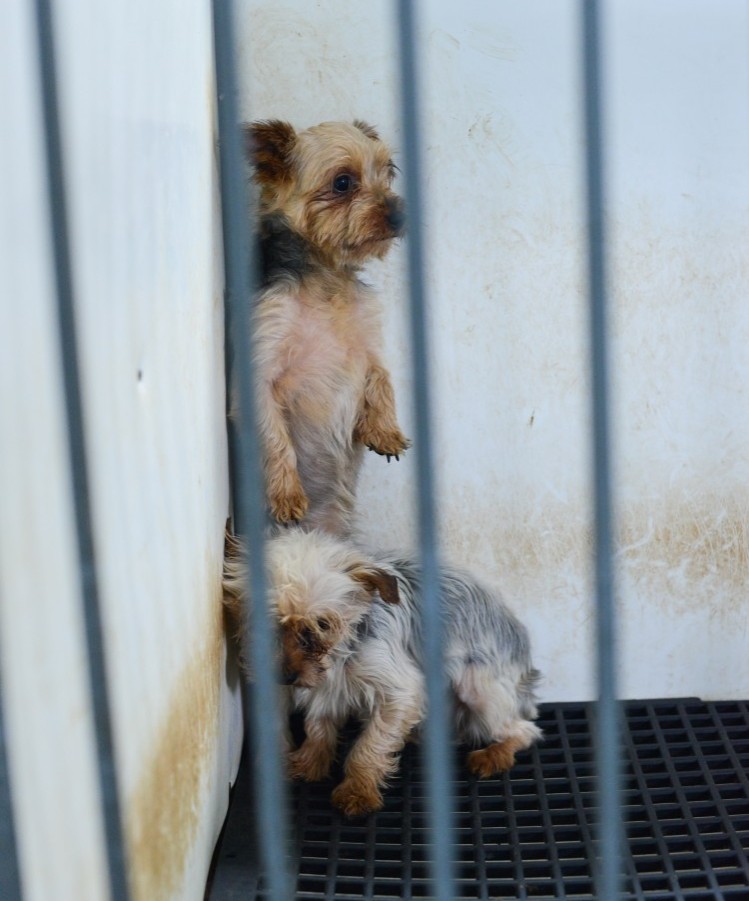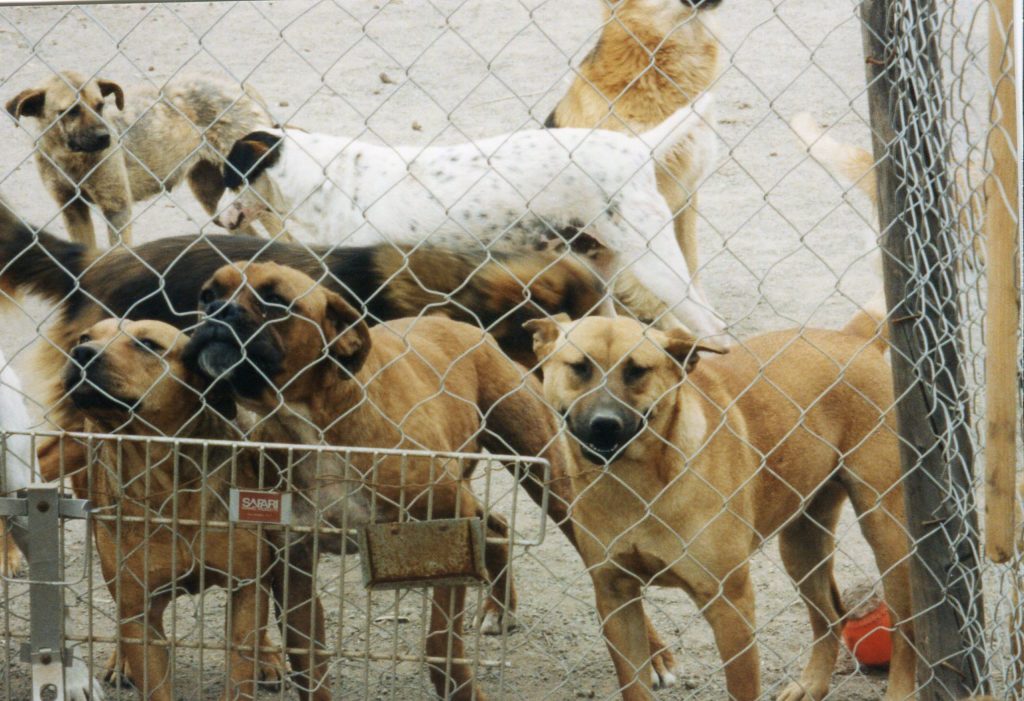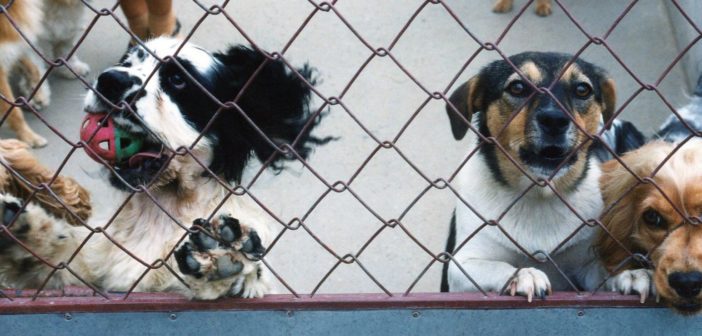
With over 60 million households in the United States including a dog, it’s safe to say there are a lot of dog lovers out there. Unfortunately, even with this being the case, many people don’t give too much thought to where their dog came from, or they don’t really realize what it means to buy a dog rather than adopt them. Abusive puppy mills are still a thriving business model, and many so-called responsible breeders aren’t much different. Where there is money to be made, some people will exploit and harm animals, and while they may be our best friends, dogs are no exception.
There are many reasons to adopt a rescue dog rather than buying one from a pet store or breeder, and with 3.3 million dogs entering US shelters each year, there’s no shortage of great dogs waiting to find their forever families. I spoke with Pete Paxton, an undercover animal welfare investigator and the author of the new book Rescue Dogs: Where They Come From, Why They Act the Way They Do, and How to Love Them Well, to learn more about this issue and why it’s so important for all dogs that people “Adopt, Don’t Shop.”
Dylan Forest: What is your background, and why did this inspire you to write a book about rescue dogs?

Pete Paxton: I’ve done undercover investigations for animal protection groups since 2001. Half of my investigations have focused on puppy mills and pet stores, while the other half have focused on factory farms, slaughterhouses, and commercial fishing. My first-hand experience has allowed me to understand the connection between puppy mills, shelters, and dog rescue.
Rescue Dogs is my chance to explain not just the commercial abuses dogs face, but ways everyone can fight that abuse. I’ve rescued many dogs, including fearful dogs from puppy mills who didn’t understand human contact. This enables me to give advice on how to bring home not just happy dogs from a shelter, but also fearful or abused dogs.
A lot of people who are looking to add a dog to their family fall in love with the idea of a particular breed, and this drives them to get their animal from somewhere like a pet store or breeder. What would you say to someone who’s about to get a dog about why they should consider adopting from a shelter or rescue organization instead?
The bottom line is that buying a puppy from a breeder costs another animal’s life. Not only are there many animals in U.S. shelters that need to be rescued so they aren’t euthanized, but recent hurricanes hitting Puerto Rico and the Caribbean Islands have displaced a large number of companion animals. It’s more important than ever to adopt.
Buying a puppy from a pet store or online seller virtually assures the puppy is coming from a puppy mill. I have consistently documented how conditions at dog breeding kennels are nothing like pet stores claim, using the evidence of undercover investigations.

The vast majority of my puppy mill work has been for the Companion Animal Protection Society. They have the largest publicly accessible database of raw evidence on puppy mills I’ve ever seen. Also, the Humane Society of the United States has recently been doing undercover investigations of Petland pet stores, and found employees selling sick puppies to customers, amongst other problems. You can read about their investigations here.
What about the idea of the “responsible breeder”? Most people are on board with the idea that puppy mills are bad, but they think there’s nothing wrong with buying a dog from a so-called ethical breeder. Are there reasons to adopt over sourcing from a breeder who treats their animals well?
Many puppy mills I investigate claim to be “responsible breeders,” and yet they are commercial kennels with dogs in cages and runs. Dogs pace and spin incessantly, which indicates a lack of exercise and enrichment. In the book I share an example of how even a small, family-run kennel had dogs terrified of human contact, and what it took to rehabilitate one of the dogs rescued from the kennel.
There are some breeders who claim to sell puppies “for the love of the breed.” To this, I say that if someone truly loves dogs, they will rescue them instead of profiting off of them.

Unfortunately one of the myths many people buy into is the idea that all rescue dogs are damaged goods with serious behavioral issues, and that they can avoid these issues by buying a blank-slate puppy of the “perfect breed.” What are your thoughts on this idea?
Nurture doesn’t guarantee control over nature, and breed standards don’t guarantee the nature of individual dogs. If you buy a puppy from a breeder, you don’t know who you’re getting. No matter what you do to affect that puppy’s behavior, the puppy will have an individual personality you can’t completely control or predict.

However, many rescue shelters know which of their dogs likes other dogs, cats, kids, swimming, chasing balls, or being couch potatoes. You are much more likely to know who’s joining your family if you adopt a rescue instead of buying a puppy from a breeder. The rescue dog may even have already been trained by a shelter volunteer to walk on a leash and know basic commands such as how to sit and stay.
Most breeders remove puppies from their mothers at five to six weeks of age, leading to separation anxiety, fear of other dogs, and biting habits. Being shipped to customers and pet stores stresses puppies’ immune systems, which are already more susceptible to diseases than healthy, grown dogs at a shelter.
Are all rescue organizations good places to adopt from? Is there anything people should be looking out for in terms of the organization itself when they’re looking to adopt?
Rescue organizations are wonderful places to adopt from, but not all are what they appear to be. Let’s start with identifying a good one, and then go over red flags to identify a false rescue.
A good animal shelter will exercise and train dogs, give you training tips, and offer lots of socialization with their dogs. They’ll also tell you everything they know about dogs’ individual personalities and backgrounds, and take their time to pair you up with the right dog instead of just sending you out the door with whoever you first picked.

Other rescues groups are made up of foster homes with no actual shelter for the public to visit, and often hold adoption events at pet supply stores. False rescues sometimes sell puppies at pet supply stores, but the puppies they claim are “rescued” are actually bought from puppy mills. How do you know which rescue group is which? It’s quite easy.
First, check the animal’s age. Most rescue dogs are just that: grown dogs. False rescues normally sell puppies between 8 to 10 weeks of age. Second, check the price. It’s rare for a rescue group to charge more than $250 for a dog adoption, and many don’t charge close to that. False rescues charge hundreds or thousands of dollars for puppies. Third, check the breeds. Real rescue groups have mostly mutts. If the rescue has nothing but different kinds of purebred and designer breed puppies, it’s a false rescue. Fourth, do a little research. If the rescue group is legitimate, other rescues in the area will know about it. Also, a local municipal shelter will probably give dogs to the rescue group to reduce that shelter’s euthanasia rate.
Do you have any words of advice for people who have recently adopted a rescue dog?
There’s a lot of misconceptions about dog training. Rescue Dogs explains why training should be based on positive reinforcement and how no one set of rules will apply to every situation and introduces the basics of dog training with step-by-step examples. Ultimately we have to remember that dogs don’t want dominant masters. Dogs want loving companions.
Rescue Dogs: Where They Come From, Why They Act the Way They Do, and How to Love Them Well, by Pete Paxton with Gene Stone, was published October 1st by TarcherPerigee. It can be purchased wherever books are sold.
Featured image: dogs wait for their new homes in a shelter in Beijing, China. Image credit Kim Bartlett – Animal People, Inc.





